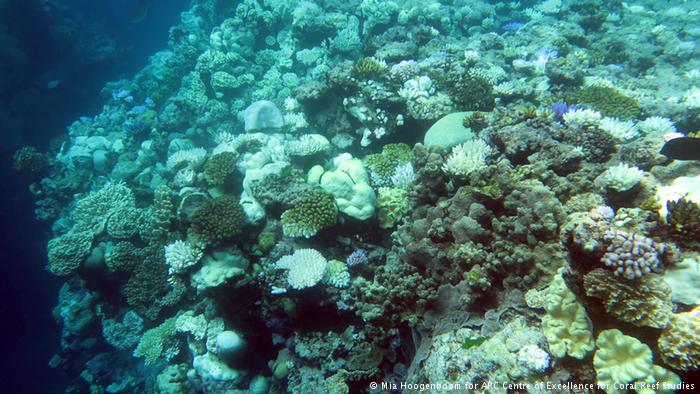The future of the Great Barrier Reef is in doubt, as it struggles to recover from a second severe bleaching event as a result of warmer ocean temperatures thought to be linked to climate change.
But a group of marine scientists in Australia are hopeful the reef could yet be saved – by artificially engineering brighter clouds to reflect back the sun’s rays and keep the waters cool.
Over the past six months, researchers at the Sydney Institute of Marine Science and the Ocean Technology Group at the University of Sydney have been investigating the use of marine cloud brightening technology (MCB) on low-lying clouds over the Great Barrier Reef.
The idea is that spraying salt into the atmosphere will encourage greater droplet formation, resulting in larger, denser clouds.
Last resort
Brightening the clouds above the Great Barrier Reef was suggested as a last-ditch bid to protect the world’s biggest reef system from further catastrophic bleaching.
Postdoctoral research assistant Daniel Harrison with the Ocean Technology Group told DW a team discussed a range of strategies to mitigate damage to the reef, including pumping cooler water directly on to the reef if temperatures got too high, or even genetically engineering more robust species of coral.
Researchers have also discussed the possibility of genetically engineering more robust coral species
It was eventually decided that making the clouds more reflective was the most viable option.
“We are concentrating on MCB as a means to address the problem of bleaching on the Great Barrier Reef primarily because it has the potential to mitigate bleaching over the reef’s incredibly large area – approximately the size of Germany,” Harrison says.
He says it is also environmentally friendly, with scientists predicting minimal side effects.
“One of the advantages of MCB is it replicates natural processes of sea spray generation which adds cloud condensation nuclei into the marine boundary layer,” Harrison says.
“No chemicals are used, the droplets are very short-lived, perhaps around 24 hours, and we would only need to use the technology during periods when the corals were at high risk of bleaching.”
Harrison now aims to focus full-time on investigating how cloud-brightening technology could be used to save the Great Barrier Reef, using detailed computer modeling of atmospheric and oceanographic conditions, hopefully followed by field trials.
“I would like to create a prototype cloud-brightening installation for testing within the next one to two years. The reef is already experiencing its second major year of bleaching in a row and if we are going to intervene, we need to do it now.”

The Great Barrier Reef was recently hit with a second severe bleaching event caused by warmer ocean temperatures
Engineering the weather
The idea that scientists could counteract the effects of climate change by egineering the weather might sound like science fiction – but it isn’t new.
Cloud-brightening technology was first proposed in 1990 by British scientist John Latham in science journal “Nature.”
Since then, the Silicon Valley-based Marine Cloud Brightening Project is responsible for most of the research into the concept, and is currently developing a nozzle that can disperse salt particles of just the right size and quantity to alter the clouds.
It is part of the broader field of geo-engineering, or climate intervention, which involves intervening in Earth’s climatic system to limit the adverse effects of global warming.
The world’s largest ever solar geo-engineering project was launched in March by Harvard University and aims to ascertain if aerosol injections into the Earth’s stratosphere could be safely used to simulate the cooling effects of a major volcanic eruption in case of an extreme rise in global temperatures.
Not everybody is convinced geo-engineering is such a good idea, however. Some experts argue large-scale climatic interventions could have unpredictable and adverse impacts on natural atmospheric systems.
And the“moral hazard” argument posits that geo-engineering could reduce motivation to cut carbon emissions.
In any case, experts stress that climate engineering should not be treated as a quick fix to the effects of global warming and only be used as a short-term solution.
Harrison argues that as the debate over geo-engineering goes on, we are fast running out of time to save the reef.
“I think the general public, and indeed many scientists, do not fully grasp the magnitude of the global warming problem,” he says. “Sensitive ecosystems such as the Great Barrier Reef are beginning to collapse before our eyes.”
“If we can invent technology to explore beyond our solar system, walk on the moon – and perhaps Mars in the not-too-distant future – then surely we can save the Great Barrier Reef from death by overheating.”










